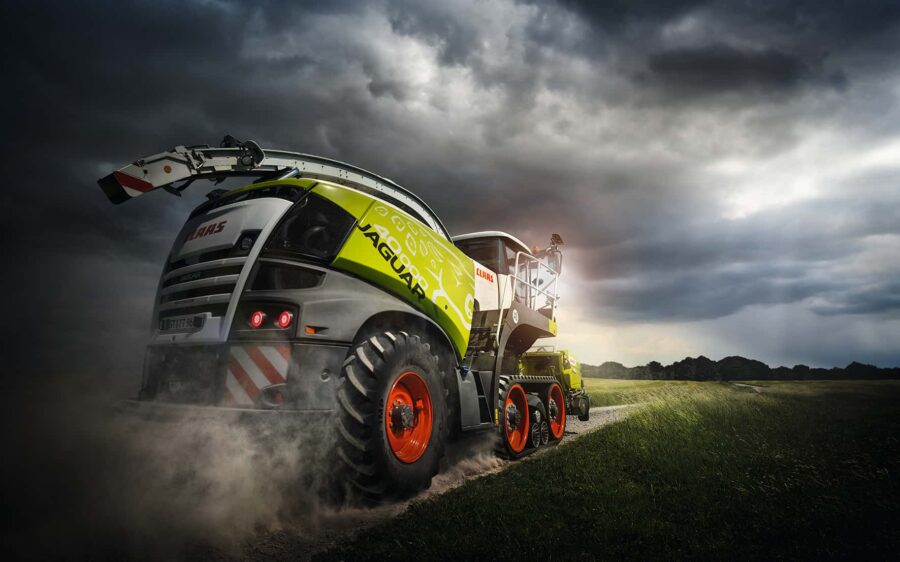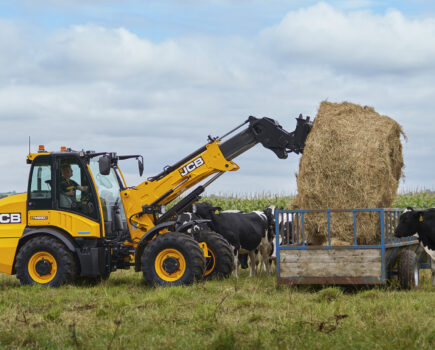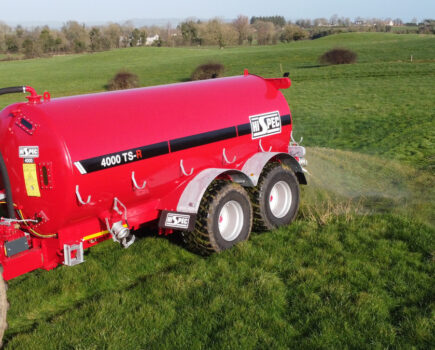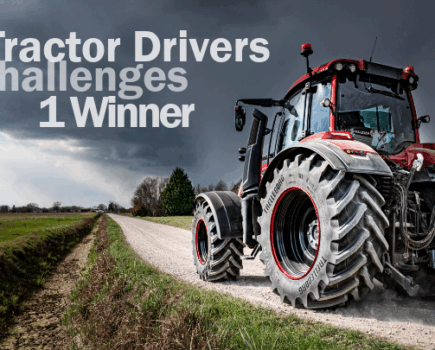CLAAS has built its 40,000th JAGUAR model at the Harsewinkel plant. Since the start of production of its first JAGUAR model series in 1973, the company has developed into the world market leader in self-propelled forage harvesters. Innovative solutions and outstanding efficiency have defined the JAGUAR success story over the course of four decades. The latest example: a Gold Innovation Award for the JAGUAR TERRA TRAC at the SIMA agribusiness show in Paris.
Debut in 1973, first guidance system in 1976
The rapid increase in maize cultivation at the end of the 1960s called for ever more productive harvesting technology while attached implements and trailed units were reaching their performance limits. CLAAS was quick to recognise the potential of this segment and, in June 1973, started manufacturing a high-performance self-propelled forage harvester, the JAGUAR 60 SF. This was followed just three years later, in 1976, by the JAGUAR 80 SF with a number of significant enhancements: the ability to separate the chopping cylinder and the intake roller, a discharge blower and an automatic guidance system. Following the expansion of the range to include the JAGUAR 70 SF, the next generation comprising four models was introduced in 1983. With sales of more than 7,000 units, the JAGUAR 690, 680, 685 and 675 made CLAAS the market leader in Europe. Five years later, the line-up had been extended to comprise six models with engine outputs between 354 hp and 215 hp.
JAGUAR 800 sets new standards
The JAGUAR 800 model series made its debut in small-scale pre-series production in 1993. The engines of the new model series, whose outputs ranged from 228 kW (310 hp) to 354 kW (481 hp), were fitted transversely behind the steering axle, thereby enabling simple, direct drive systems, an optimal supply of cooling air and easy access to the interior of the machine. This innovative configuration set the standard for the advanced forage harvesters used around the world today. Thanks to the favourable drive axle loading, it became possible for the first time to fit eight-row maize front attachments. An accelerator was placed directly behind the Corncracker to speed up the flow of chopped material.
A special variant of the JAGUAR 800 model series was the FIELD SHUTTLE, which went on sale in 1997. It was based on a JAGUAR 880 and was available in a trailer version (FS 880 T) as well as a container version (FS 880 C). The innovative logistics concept made it possible to hitch conventional truck trailers to a JAGUAR forage harvester, or to mount a container. In this case, the crop transfer process took place at the end of the field, to avoid the transport vehicles having to drive onto the field.
A significant power milestone was passed in 2001, with 445 kW (605 hp) under the hood of the JAGUAR 900. Another new development was the completely new design of the operator’s workplace.
All functions were easily adjusted and monitored via a terminal. With effect from the 2003 season, customers could opt for the high-speed SPEEDSTAR version with a top speed of 40 km/h. The legendary GREEN EYE, launched in 2006, delivered an outstanding 623 hp along with numerous innovations for even greater efficiency and user convenience.
JAGUAR 900: The next generation
The JAGUAR 900 series introduced in the 2008 season offered outstanding performance and supreme chop quality. The new models were equipped with a wide range of engine outputs, a new, intelligent engine control system, continuous moisture measurement, the convenience of the CEBIS system and a new V-MAX chopping cylinder. The AUTO-FILL automatic filling system in the JAGUAR 900 was awarded a gold medal at Agritechnica 2009. This system provides a simpler, automatically controlled wagon-filling process, significantly reducing the operator’s workload.
The CLAAS JAGUAR received another prestigious award at AGRITECHNICA 2011, as “Machine of the Year”. Among the features cited by the judges was the new DYNAMIC POWER control system which matches power output to demand. Since 2013, the 900 series has also included high-power engine variants meeting the Tier 4i exhaust emission standard.
In 2014, it was the next generation of the JAGUAR 800 model series that made its debut. Here, too, the DYNAMIC POWER automatic engine output control system delivers maximum efficiency and throughput in both the full and partial load ranges by automatically increasing or reducing the engine output. This means the operator is always working in the most efficient engine speed range, and with greater comfort than ever before in the redesigned cab.
For the 2017 financial year, CLAAS introduced an enhanced variant of the JAGUAR 900 series of forage harvesters which has proven itself over many years. The new features: an infinitely variable front attachment drive, a further enhanced crop flow system, a new chassis concept and the CLAAS AUTO FILL system for loss-free side and rear offloading.
Number 40,000 is a TERRA TRAC
The latest member of the CLAAS JAGUAR family, having joined it in 2018, is the JAGUAR 960 TERRA TRAC. This is the first forage harvester to feature a factory-integrated crawler track system. The new concept offers optimal soil protection under all conditions while remaining narrow enough for on-road travel. An intelligent headland protection system prevents damage to the grass cover and enables year-round operation. This innovative machine was recognised with a Gold Innovation Award at the SIMA agribusiness show in Paris.
With twelve models in two model series, CLAAS therefore offers a comprehensive line-up of self-propelled forage harvesters for every area of application. Since the start of JAGUAR production, CLAAS has also been developing the headers, placing great emphasis on optimal crop flow and maximum efficiency. Currently the cutterbar DIRECT DISC, the PICK UP and the corn header ORBIS are available.
The 40,000th JAGUAR has rolled off the production line on TERRA TRAC crawler tracks and with a special design on the side panels. This milestone in production will also be marked by the deployment around the world of demonstration machines bearing the big cat design on the side.





